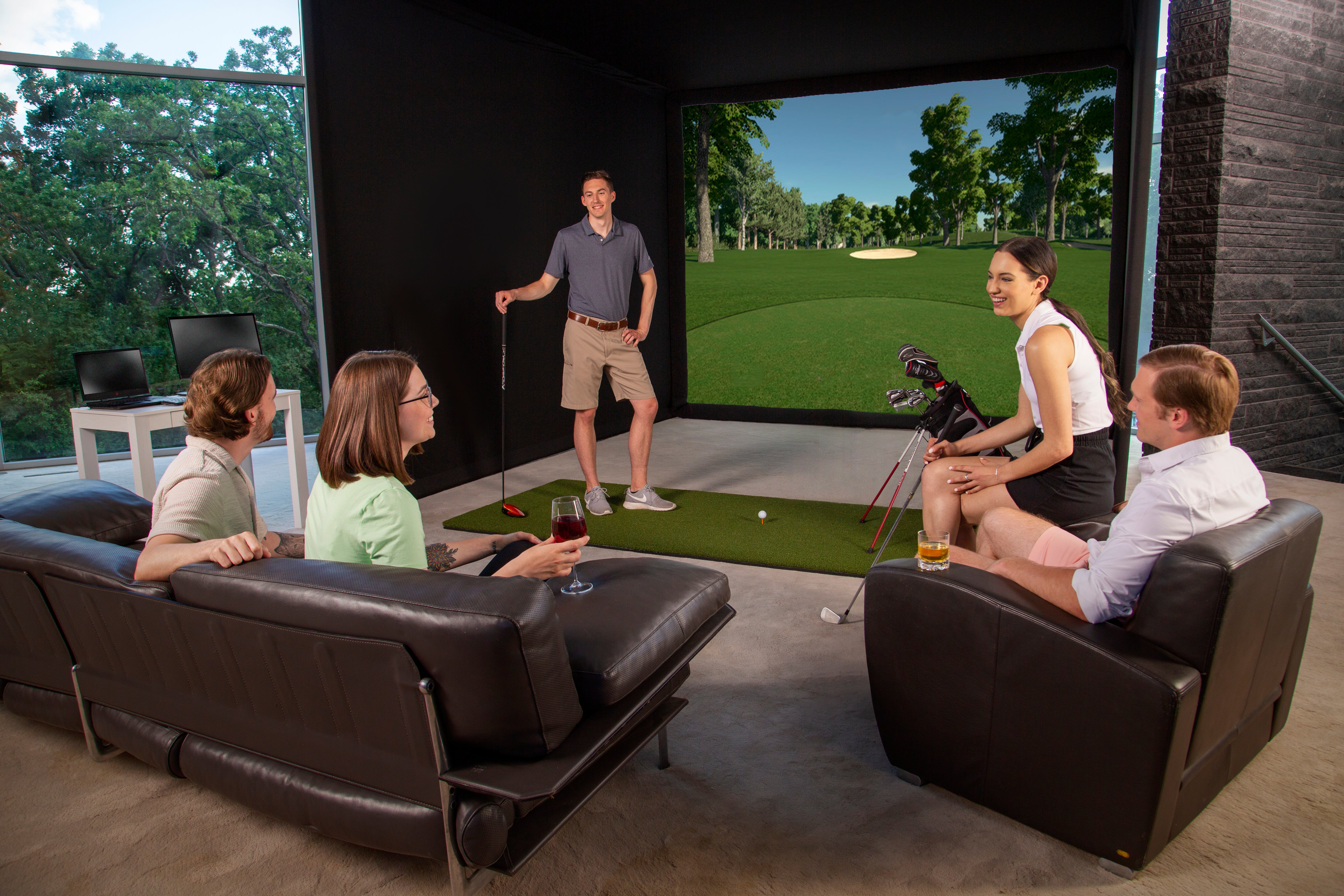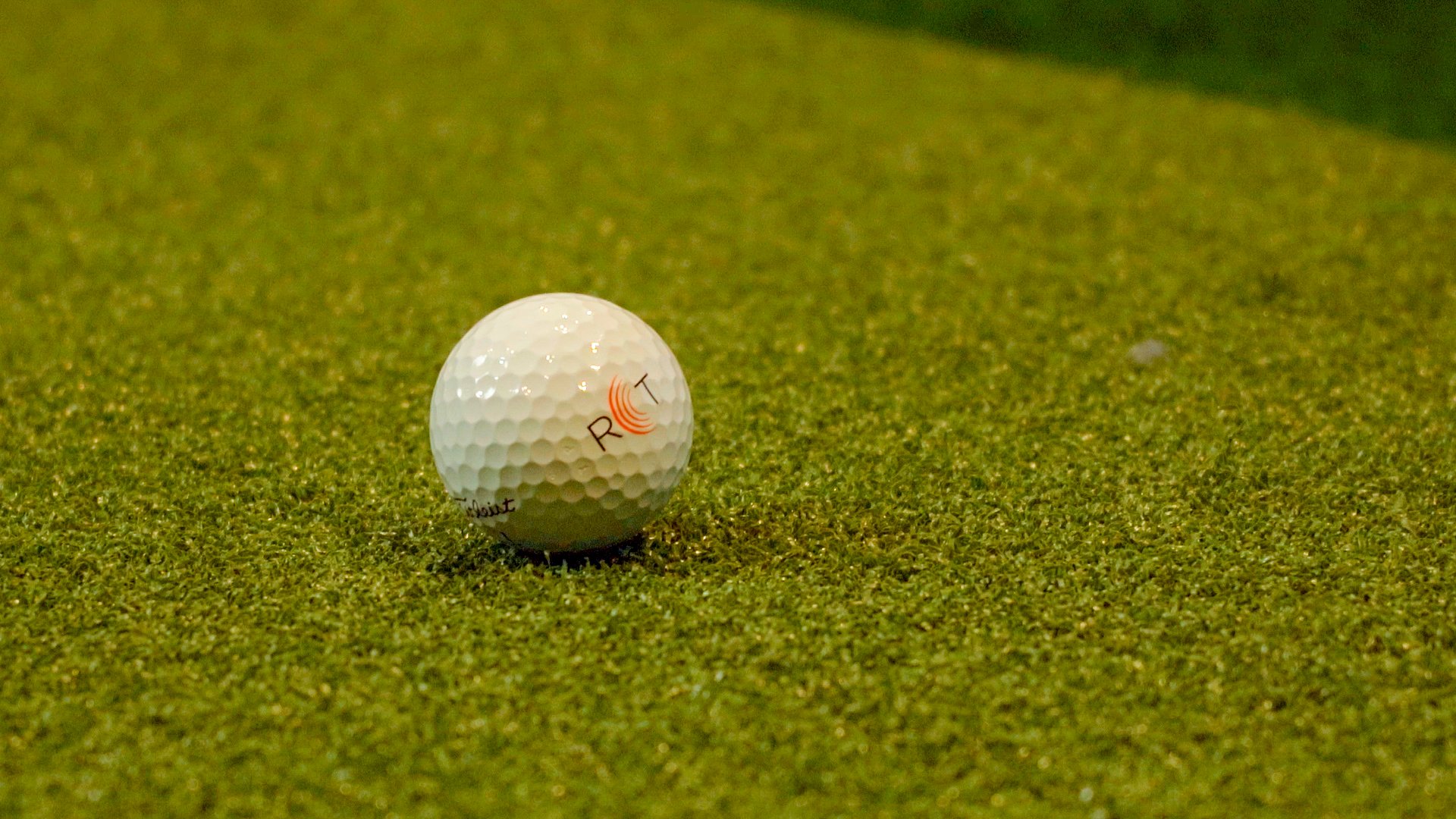Curious how the SkyTrak launch monitor compares to real life range finder distances? Let us show you!
EDITOR'S NOTE: The original SkyTrak launch monitor featured in this piece has been discontinued.
The SkyTrak is a great, affordable launch monitor for indoor golf simulator setups. It provides a ton of useful data without requiring a lot of space as it sits right next to your hitting area.
With the success the Carl’s Place team has had with it indoors, we wanted to take it on a “test drive” at the range where we could compare actual carry distance in real life to what the SkyTrak software told us on our tablet. The questions we hoped to answer were:
- How accurate is the SkyTrak overall?
- Is the SkyTrak accurate outdoors?
Before we start, let's make sure we're on the same page about understanding launch monitor data.
On a chilly and breezy November day, we visited the local driving range at Oak Ridge Golf Course in Milton, Wis., with our SkyTrak unit and TrueStrike Hitting Mat. After some troubleshooting, SkyTrak recommended hitting off a mat instead of natural grass to help the unit stay on the same level as the ball and to keep the unit level overall.
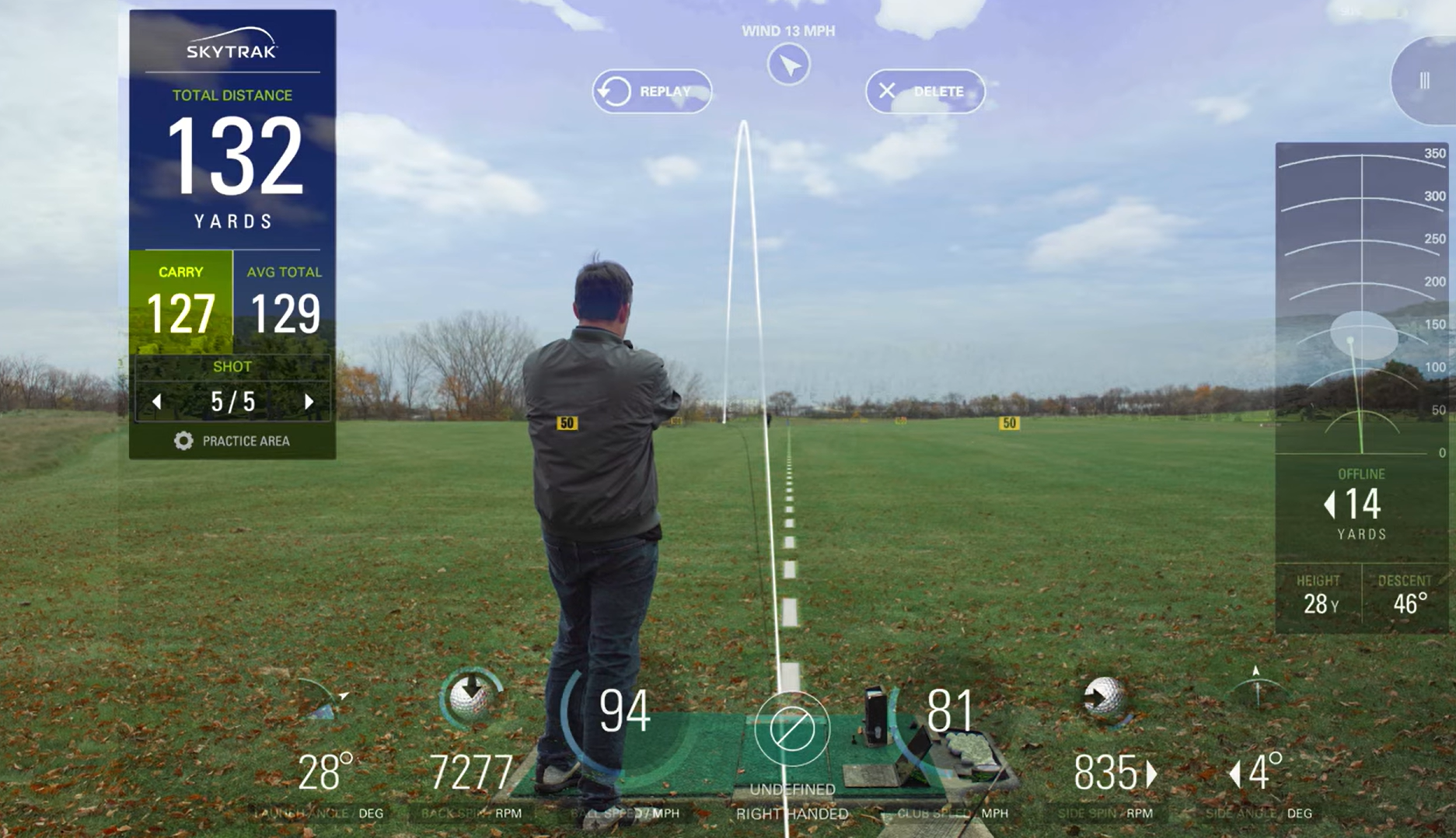
Another benefit of using the hitting mat with the SkyTrak is that divots don’t come into play. Since the SkyTrak needs the ball to be placed in the same spot for every shot, we didn’t think our Product Specialist Tim would enjoy hitting out of the same divot every time.

If you’re looking to increase the accuracy of your SkyTrak, we found that placing it on your hitting mat/surface so it is level with your hitting area seems to work best. We attempted using it on a natural grass surface and it struggled to read the ball due to the uneven ground, divots, and other factors.
We focused solely on the carry distance data because too many other factors, such as weather and terrain, play into total distance, ball flight and so on.
“There are so many other factors that come into play with total distance including run and shot shape,” Tim said. “Things like wind, ground firmness, and shape of the terrain will all affect the actual run on the ball compared to what the SkyTrak was giving us.
“The shot shape was occasionally off, but for the most part it got the general flight direction correct. Even though we tried to compensate for the weather in the app, I think the fact that it was a windy day affected the actual flight of the ball compared to what the SkyTrak showed us.”
Tim hit 20 shots with three different clubs that range significantly in club speed and typical carry distance: pitching wedge, 6 iron and driver. Mike, our content writer, was out in the field marking the real-life carry distance with an actual flag stick so Tim could use a rangefinder to get that distance and record the data on our spreadsheet. Our videographer Jon stayed busy capturing all the footage.
We've also tested these other launch monitors at the range:
SkyTrak Launch Monitor Accuracy Tests
PITCHING WEDGE
Tim started the day with 20 shots with his pitching wedge, where the SkyTrak performed pretty well.
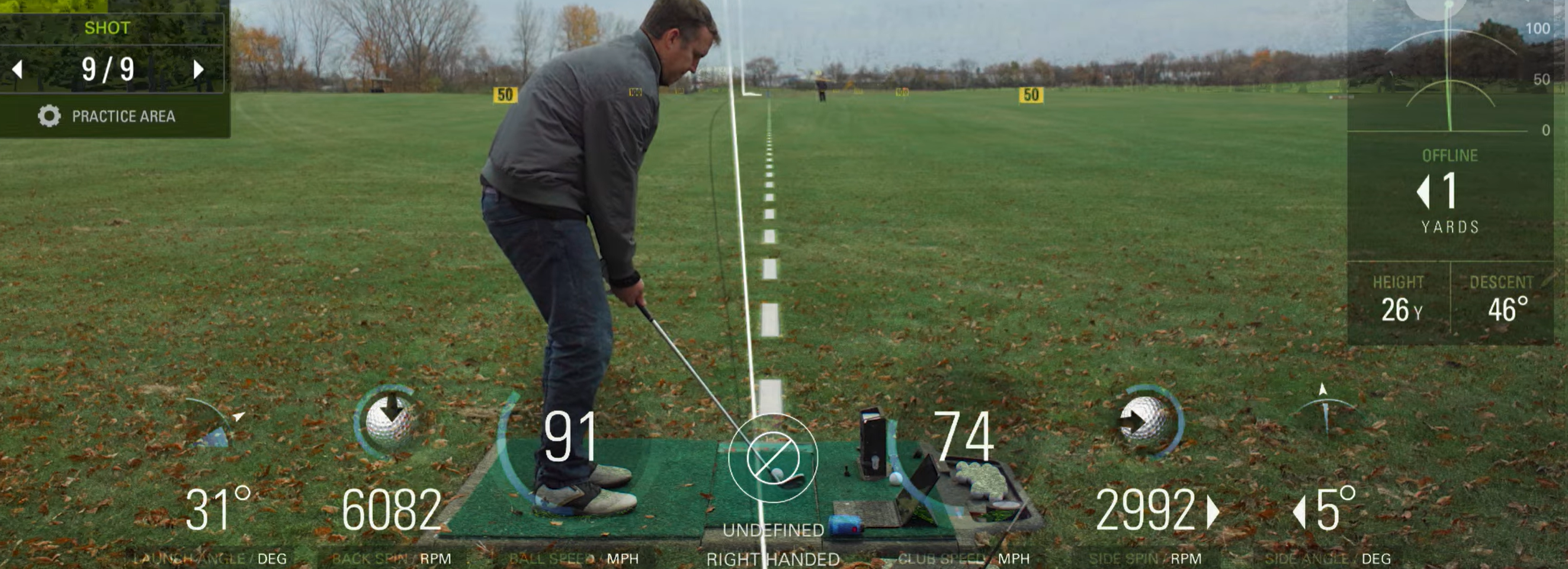
As you can see in the table below, the simulator carry distance was never less than the actual carry distance. It was a breezy day at the range, and although we plugged in all the weather data into the SkyTrak app, the app could measure the wind effect on the ball differently than what it was in real life. After all, when it’s breezy one minute and calm the next in real life, it would be hard for the simulator to know that.
But overall, the pitching wedge was on average within 6.82 percent of the actual carry distance in real life. Not too shabby.
| Shot |
Real Life Carry Distance |
Simulator Carry Distance |
Yardage Difference |
% Difference |
| Shot 1 |
100 |
105 |
5 |
5.00% |
| Shot 2 |
105 |
122 |
17 |
16.19% |
| Shot 3 |
112 |
112 |
0 |
0.00% |
| Shot 4 |
122 |
127 |
5 |
4.10% |
| Shot 5 |
102 |
113 |
11 |
10.78% |
| Shot 6 |
107 |
115 |
8 |
7.48% |
| Shot 7 |
98 |
110 |
12 |
12.24% |
| Shot 8 |
107 |
117 |
10 |
9.35% |
| Shot 9 |
107 |
119 |
12 |
11.21% |
| Shot 10 |
97 |
99 |
2 |
2.06% |
| Shot 11 |
95 |
103 |
8 |
8.42% |
| Shot 12 |
107 |
107 |
0 |
0.00% |
| Shot 13 |
102 |
103 |
1 |
0.98% |
| Shot 14 |
119 |
135 |
16 |
13.45% |
| Shot 15 |
110 |
118 |
8 |
7.27% |
| Shot 16 |
109 |
116 |
7 |
6.42% |
| Shot 17 |
99 |
106 |
7 |
7.07% |
| Shot 18 |
99 |
101 |
2 |
2.02% |
| Shot 19 |
109 |
113 |
4 |
3.67% |
| Shot 20 |
115 |
125 |
10 |
8.70% |
| |
|
Average |
7.25 |
6.82% |
6 IRON
As you will see below, the 6 iron didn’t perform quite as well as the pitching wedge. However, there are many factors that could have contributed to that, including the weather, human error in marking the spot in the field, and so on.
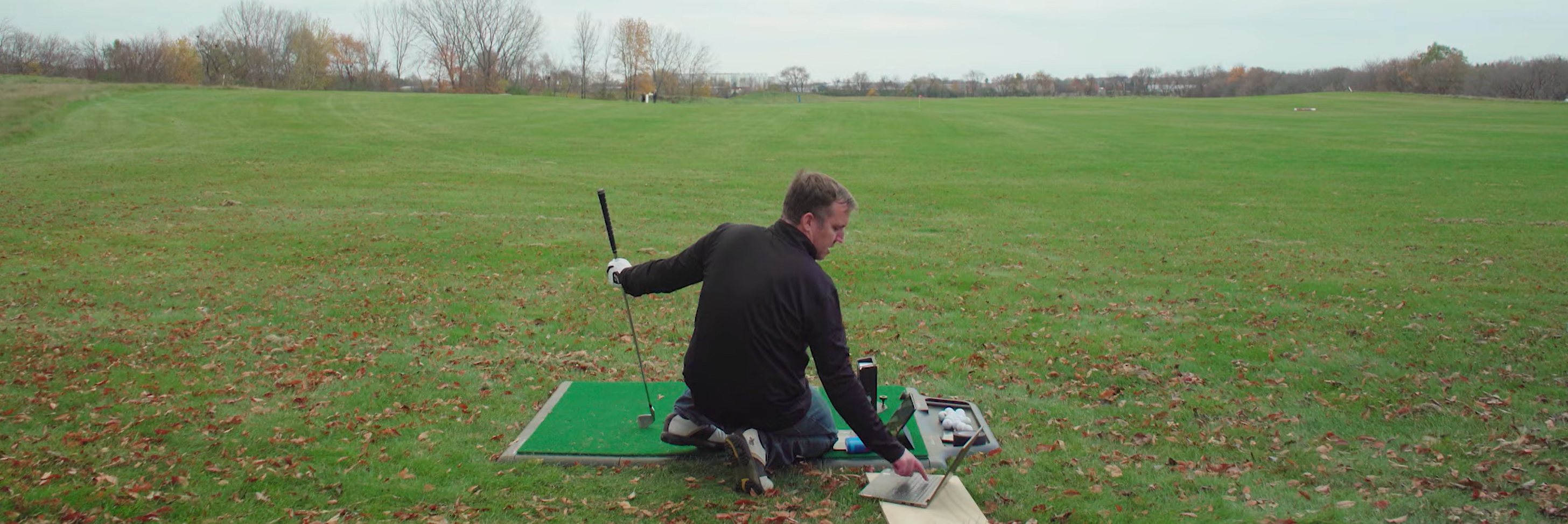
A majority of the shots stayed within 15 yards of the actual carry distance, which is respectable. Some were well over 15 yards different, including one at 42 yards, which seemed to be just a complete misread and we aren’t exactly sure why or how.
This time, it was a mixed bag of whether the carry distance would be longer in real life or on the simulator. On average, though, it was about 10 percent different.
| Shot |
Real Life Carry Distance |
Simulator Carry Distance |
Yardage Difference |
% Difference |
| Shot 1 |
147 |
165 |
18 |
12.24% |
| Shot 2 |
140 |
144 |
4 |
2.86% |
| Shot 3 |
160 |
175 |
15 |
9.38% |
| Shot 4 |
160 |
202 |
42 |
26.25% |
| Shot 5 |
147 |
157 |
10 |
6.80% |
| Shot 6 |
165 |
172 |
7 |
4.24% |
| Shot 7 |
140 |
145 |
5 |
3.57% |
| Shot 8 |
152 |
168 |
16 |
10.53% |
| Shot 9 |
146 |
155 |
9 |
6.16% |
| Shot 10 |
140 |
149 |
9 |
6.43% |
| Shot 11 |
160 |
183 |
23 |
14.38% |
| Shot 12 |
152 |
184 |
32 |
21.05% |
| Shot 13 |
143 |
149 |
6 |
4.20% |
| Shot 14 |
136 |
145 |
9 |
6.62% |
| Shot 15 |
128 |
133 |
5 |
3.91% |
| Shot 16 |
140 |
161 |
21 |
15.00% |
| Shot 17 |
141 |
166 |
25 |
17.73% |
| Shot 18 |
160 |
187 |
27 |
16.88% |
| Shot 19 |
144 |
154 |
10 |
6.94% |
| Shot 20 |
136 |
143 |
7 |
5.15% |
| |
|
Average |
15 |
10.02% |
DRIVER
Last was the driver, which Tim has admitted is not his most consistent club. Sometimes he missed his aiming point left and other times he missed right. But who doesn’t?
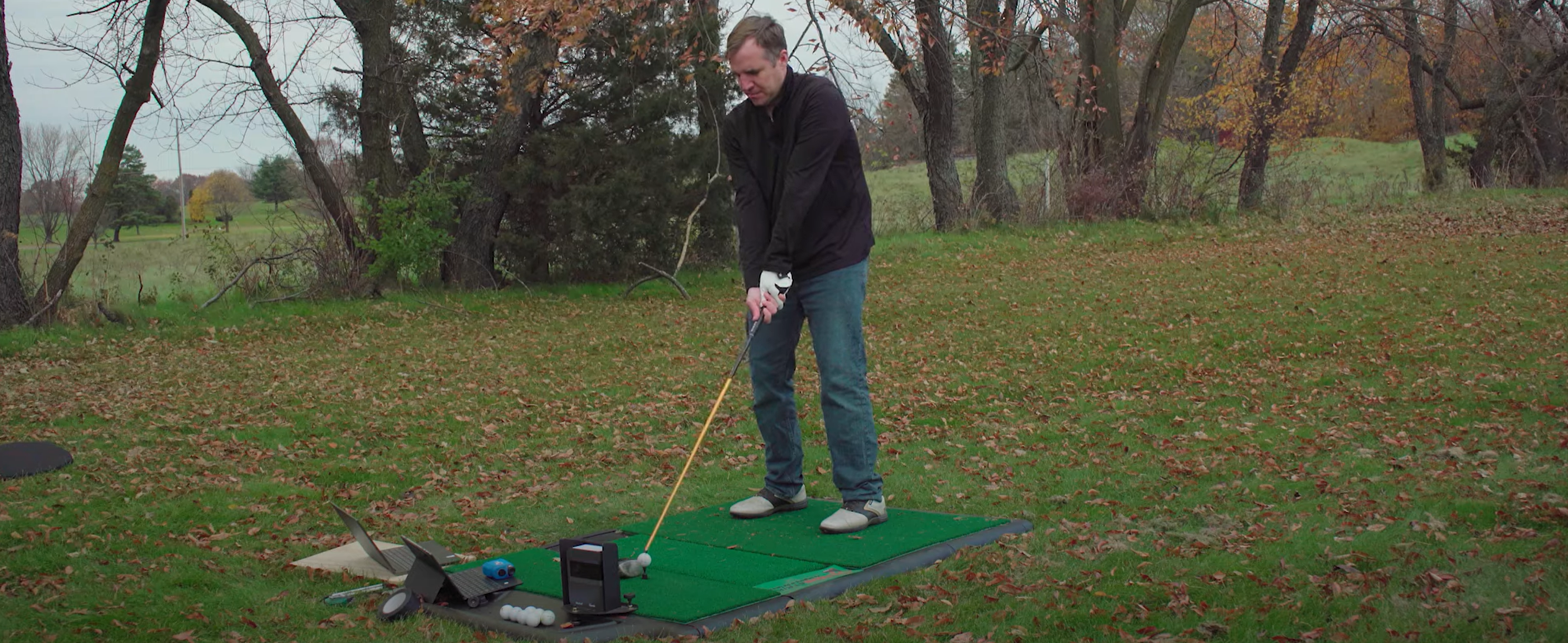
Marking the driver shots in the field was definitely the most difficult for Mike as there was a lot of squinting and exercise involved. However, the data shows that the carry distances were just 4.27 percent different.
Again, it was a mixed bag as to if the real life or simulator carry distance would be longer, but only four shots were more than 15 yards different. Check out the data below.
| Driver |
Real Life Carry Distance |
Simulator Carry Distance |
Yardage Difference |
% Difference |
| Shot 1 |
195 |
196 |
1 |
0.51% |
| Shot 2 |
200 |
185 |
15 |
7.50% |
| Shot 3 |
240 |
231 |
9 |
3.75% |
| Shot 4 |
203 |
191 |
12 |
5.91% |
| Shot 5 |
214 |
222 |
8 |
3.74% |
| Shot 6 |
218 |
211 |
7 |
3.21% |
| Shot 7 |
208 |
224 |
16 |
7.69% |
| Shot 8 |
207 |
203 |
4 |
1.93% |
| Shot 9 |
204 |
205 |
1 |
0.49% |
| Shot 10 |
218 |
210 |
8 |
3.67% |
| Shot 11 |
223 |
223 |
0 |
0.00% |
| Shot 12 |
206 |
196 |
10 |
4.85% |
| Shot 13 |
220 |
220 |
0 |
0.00% |
| Shot 14 |
200 |
194 |
6 |
3.00% |
| Shot 15 |
238 |
235 |
3 |
1.26% |
| Shot 16 |
208 |
227 |
19 |
9.13% |
| Shot 17 |
178 |
207 |
29 |
16.29% |
| Shot 18 |
220 |
238 |
18 |
8.18% |
| Shot 19 |
208 |
208 |
0 |
0.00% |
| Shot 20 |
215 |
224 |
9 |
4.19% |
| |
|
Average |
8.75 |
4.27% |
SkyTrak Accuracy Test Overall
When looking at the 60 shots overall, the average difference was just more than 10 yards, or 7 percent. Overall, not too shabby despite the few shots that were significantly different.
“It is a good launch monitor under the correct conditions,” Tim said. “Sunlight will definitely affect the unit being able to register a shot. Our initial attempt at doing testing did not work well. I think the issues with shot data being inaccurate could come from human error, and possibly weather conditions affecting ball flight.”
Although the SkyTrak launch monitor is portable and easy to bring with you to the range, it does not seem to perform as well outside as it does inside. That said, take into account that there might be some variation with your indoor numbers as well, but overall, it’s a great golf launch monitor for the price.
We're willing to bet the newer SkyTrak+ will be more accurate!

